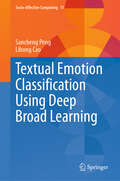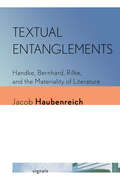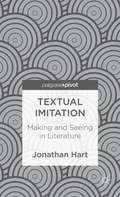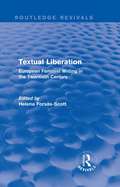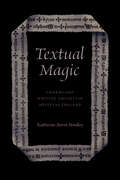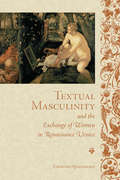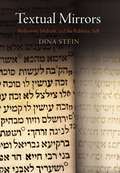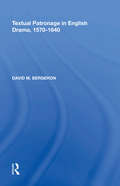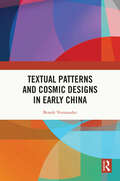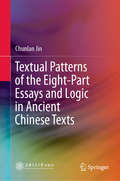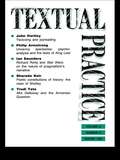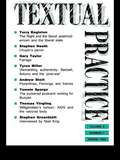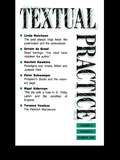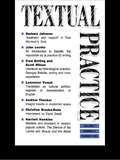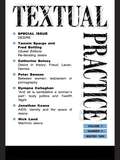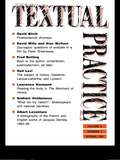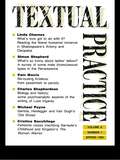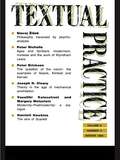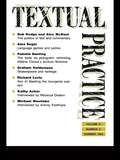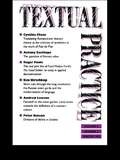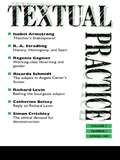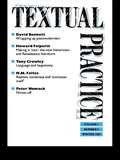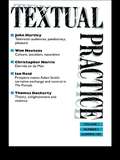- Table View
- List View
Textual Emotion Classification Using Deep Broad Learning (Socio-Affective Computing #11)
by Sancheng Peng Lihong CaoIn this book, the authors systematically and comprehensively discuss textual emotion classification by using deep broad learning. Since broad learning possesses certain advantages such as simple network structure, short training time and strong generalization ability, it is a new and promising framework for textual emotion classification in artificial intelligence. As a result, how to combine deep and broad learning has become a new trend of textual emotion classification, a booming topic in both academia and industry. For a better understanding, both quantitative and qualitative results are present in figures, tables, or other suitable formats to give the readers the broad picture of this topic along with unique insights of common sense and technical details, and to pave a solid ground for their forthcoming research or industry applications. In a progressive manner, the readers will gain exclusive knowledge in textual emotion classification using deep broad learning and be inspired to further investigate this underexplored domain. With no other similar book existing in the literature, the authors aim to make the book self-contained for newcomers, only a few prerequisites being expected from the readers. The book is meant as a reference for senior undergraduates, postgraduates, scientists and researchers interested to have a quick idea of the foundations and research progress of security and privacy in federated learning, and it can equally well be used as a textbook by lecturers, tutors, and undergraduates.
Textual Entanglements: Handke, Bernhard, Rilke, and the Materiality of Literature (Signale: Modern German Letters, Cultures, and Thought)
by Jacob HaubenreichTextual Entanglements explores how the material processes of writing manifest in the published works of three twentieth-century Austrian authors: Peter Handke, Thomas Bernhard, and Rainer Maria Rilke. These authors left behind material traces of their writing processes, whether in notebooks, piles of disorganized typewritten sheets, or manuscript fragments. The materials do not merely act as containers for their texts: They spill into the semantic content of the writing, becoming entangled in it. The idiosyncratic materials and methods of the writing process do not disappear when the work enters print. Examining these material traces, Textual Entanglements contends that we cannot fully understand these texts' semantic dynamics without considering the material circumstances of their production. Jacob Haubenreich reads Handke, Bernhard, and Rilke to argue that the materiality of textual production opens up a broader semiotic field in which meaning can be created. Haubenreich's book offers a theoretical framework and methodological models for integrating analysis of textual materiality into literary analysis in ways that expand the boundaries of literary interpretation.
Textual Imitation
by Jonathan HartTextual Imitation offers a new critique of the space between fiction and truth, poetry and philosophy. In a nimble, yet startlingly wide-ranging argument, esteemed scholar Jonathan Hart argues that recognition and misrecognition are the keys to understanding texts and contexts from the Old World to the New World.
Textual Liberation: European Feminist Writing in the Twentieth Century (Routledge Revivals)
by Helena Forsas-ScottFeminist writing has emerged in recent years as a major influence of twentieth-century European literature. Textual Liberation, first published in 1991, provides a timely and wide-ranging survey of twentieth-century feminist writing in Europe, presenting texts from a number of countries and highlighting some of the transnational parallels and contrasts. The contributors emphasize the wider contexts- political, social, economic- in which the texts were produced. They cover feminist literature in Britain, Scandinavia, Germany, Eastern Europe, Russia, France, Spain, Italy, and Turkey, and consider a range of genres, including the novel, poetry, drama, essays, and journalism. Each chapter contains an extensive bibliography with special emphasis on material available in English. A stimulating introduction to the development of European feminist writing, Textual Liberation will be an invaluable resource for students of women’s literature, women’s studies, and feminism.
Textual Magic: Charms and Written Amulets in Medieval England
by Katherine Storm HindleyAn expansive consideration of charms as a deeply integrated aspect of the English Middle Ages. Katherine Storm Hindley explores words at their most powerful: words that people expected would physically change the world. Medieval Europeans often resorted to the use of spoken or written charms to ensure health or fend off danger. Hindley draws on an unprecedented archive of more than a thousand such charms from medieval England—more than twice the number gathered, transcribed, and edited in previous studies and including many texts still unknown to specialists on this topic. Focusing on charms from 1100 to 1350 CE as well as previously unstudied texts in Latin, French, and English, Hindley addresses important questions of how people thought about language, belief, and power. She describes seven hundred years of dynamic, shifting cultural landscapes, where multiple languages, alphabets, and modes of transmission gained and lost their protective and healing power. Where previous scholarship has bemoaned a lack of continuity in the English charms, Hindley finds surprising links between languages and eras, all without losing sight of the extraordinary variety of the medieval charm tradition: a continuous, deeply rooted part of the English Middle Ages.
Textual Magic: Charms and Written Amulets in Medieval England
by Katherine Storm HindleyAn expansive consideration of charms as a deeply integrated aspect of the English Middle Ages. Katherine Storm Hindley explores words at their most powerful: words that people expected would physically change the world. Medieval Europeans often resorted to the use of spoken or written charms to ensure health or fend off danger. Hindley draws on an unprecedented archive of more than a thousand such charms from medieval England—more than twice the number gathered, transcribed, and edited in previous studies and including many texts still unknown to specialists on this topic. Focusing on charms from 1100 to 1350 CE as well as previously unstudied texts in Latin, French, and English, Hindley addresses important questions of how people thought about language, belief, and power. She describes seven hundred years of dynamic, shifting cultural landscapes, where multiple languages, alphabets, and modes of transmission gained and lost their protective and healing power. Where previous scholarship has bemoaned a lack of continuity in the English charms, Hindley finds surprising links between languages and eras, all without losing sight of the extraordinary variety of the medieval charm tradition: a continuous, deeply rooted part of the English Middle Ages.
Textual Masculinity and the Exchange of Women in Renaissance Venice
by Courtney QuaintanceTextual Masculinity and the Exchange of Women in Renaissance Venice is a provocative analysis of the pornographic poetry written in patrician poet Domenico Venier's social circle. While Venier and his salon were renowned for elegant love sonnets featuring unattainable female beloveds, among themselves they wrote and circulated poems in Venetian dialect in which women were prostitutes whose defiled bodies were available to all.Courtney Quaintance analyses poetry, letters, plays, and verse dialogues to show how male writers established, sustained, and publicized their relationships to one another through the exchange of fictional women. She also shows how Gaspara Stampa and Veronica Franco, two women writers with ties to the salon, appropriated and transformed tropes of female sexuality and male literary collaboration to position themselves within this homosocial literary economy. Based on archival work and Quaintance's exceptional knowledge of Venetian dialect poetry, Textual Masculinity and the Exchange of Women in Renaissance Venice is an unprecedented window into the understudied world of Venetian literature.
Textual Mirrors: Reflexivity, Midrash, and the Rabbinic Self (Divinations: Rereading Late Ancient Religion)
by Dina SteinAs they were entering Egypt, Abram glimpsed Sarai's reflection in the Nile River. Though he had been married to her for years, this moment is positioned in a rabbinic narrative as a revelation. "Now I know you are a beautiful woman," he says; at that moment he also knows himself as a desiring subject, and knows too to become afraid for his own life due to the desiring gazes of others.There are few scenes in rabbinic literature that so explicitly stage a character's apprehension of his or her own or another's literal reflection. Still, Dina Stein argues, the association of knowledge and reflection operates as a central element in rabbinic texts. Midrash explicitly refers to other texts; biblical texts are both reconstructed and taken apart in exegesis, and midrashic narrators are situated liminally with respect to the tales they tell. This inherent structural quality underlies the propensity of rabbinic literature to reflect or refer to itself, and the "self" that is the object of reflection is not just the narrator of a tale but a larger rabbinic identity, a coherent if polyphonous entity that emerges from this body of texts.Textual Mirrors draws on literary theory, folklore studies, and semiotics to examine stories in which self-reflexivity operates particularly strongly to constitute rabbinic identity through the voices of Simon the Just and a handsome shepherd, the daughter of Asher, the Queen of Sheba, and an unnamed maidservant. In Stein's readings, these self-reflexive stories allow us to go through the looking glass: where the text comments upon itself, it both compromises the unity of its underlying principles—textual, religious, and ideological—and confirms it.
Textual Patronage in English Drama, 1570-1640
by David M. BergeronThrough an investigation of the dedications and addresses from various printed plays of the English Renaissance, the author recuperates the richness of these prefaces and connects them to the practice of patronage. The prefatory matter discussed ranges from the printer John Day's address to readers (the first of its kind) in the 1570 edition of Gorboduc to Richard Brome's dedication to William Seymour and address to readers in his 1640 play, Antipodes. The study includes discussion of prefaces in plays by Shakespeare's contemporaries as well as Shakespeare himself, among them Marston, Jonson, and Heywood. The author uses these prefaces to show that English playwrights, printers and publishers looked in two directions, toward aristocrats and toward a reading public, in order to secure status for and dissemination of dramatic texts. The author points out that dedications and addresses to readers constitute obvious signs that printers, publishers and playwrights in the period increasingly saw these dramatic texts as occupying a rightful place in the humanistic and commercial endeavor of book production.
Textual Patterns and Cosmic Designs in Early China
by Benoît VermanderVia a hermeneutics focused on Chinese numerology and concentric arrangements, this book offers a novel construal of the textual universe proper to early China writings.The author lays bare distinguishable patterns of textual composition while relating them to corresponding patterns of thinking. He differentiates rhetorical variants through detailed studies of the Zhuangzi’s Inner chapters, the Laozi, the Analects, and the Huainanzi. The philosophical depth and relevance of the Chinese ancient worldview appear in a fresh light when one unearths the patterns into which its content is embedded. The focus on textual patterns and rhetorical arrangements also facilitates the reading of Chinese classics alongside other traditions.The book will be a valuable reference for scholars and graduate students studying Chinese literary criticism, Chinese philosophy, and comparative philosophy.
Textual Patterns of the Eight-Part Essays and Logic in Ancient Chinese Texts
by Chunlan JinThis book systematically depicts the theory of textual patterns (chengshi) of the eight-part essays and logic in ancient Chinese texts. With the rare materials, it covers all the basic and important aspects of the whole process and values of chengshi, such as the transformation of different parts and the coherent expression of the doctrines, the planning of writing, and the application to the aesthetic and pedagogic fields. It also explores the similarities and disparities of logical patterns between ancient Chinese and Western texts. Though entirely fresh and tentative, the contrastive studies get new insights into the logic and philosophical concepts hidden in the writings for better understanding of the uniqueness and richness implied in Chinese culture.
Textual Practice: Volume 9 Issue 2
by Daphna Erdinast-Vulcan J. Hillis Miller Peter Nicholls Jo-Ann Wallace Harriet Guest Laurie E. OsborneFirst published in 1995. Routledge is an imprint of Taylor & Francis, an informa company.
Textual Practice: Volume 8, Issue 3
by Terence HawkesFirst published in 1994. Routledge is an imprint of Taylor & Francis, an informa company.
Textual Practice: Volume 8, Issue 1
by Terence HawkesFirst published in 1994. Routledge is an imprint of Taylor & Francis, an informa company.
Textual Practice: Volume 8, Issue 2
by Terence HawkesFirst published in 1994. Routledge is an imprint of Taylor & Francis, an informa company.
Textual Practice: Volume 7, Issue 2
by Terence HawkesFirst published in 1993. Routledge is an imprint of Taylor & Francis, an informa company.
Textual Practice: Volume 7, Issue 3: Special Issue: Desire
by Terence HawkesFirst published in 1993. Routledge is an imprint of Taylor & Francis, an informa company.
Textual Practice: Volume 5, Issue 1
by Terence HawkesFirst published in 1991. Routledge is an imprint of Taylor & Francis, an informa company.
Textual Practice: Volume 6, Issue 1
by Terence HawkesFirst published in 1992. Routledge is an imprint of Taylor & Francis, an informa company.
Textual Practice: Volume 6, Issue 3
by Terence HawkesFirst published in 1992. Routledge is an imprint of Taylor & Francis, an informa company.
Textual Practice: Volume 6, Issue 2
by Terence HawkesFirst published in 1992. Routledge is an imprint of Taylor & Francis, an informa company.
Textual Practice: Volume 4, Issue 3
by Terence HawkesFirst published in 1990. Routledge is an imprint of Taylor & Francis, an informa company.
Textual Practice: Issue 7 Volume 3 No. 1
by Terence HawkesFirst Published in 1989. Routledge is an imprint of Taylor & Francis, an informa company.
Textual Practice: Volume 8, Issue 1
by Terence HawkesFirst Published in 1987. Routledge is an imprint of Taylor & Francis, an informa company.
Textual Practice: Volume 8, Issue 1
by Terence HawkesFirst Published in 1987. Routledge is an imprint of Taylor & Francis, an informa company.
